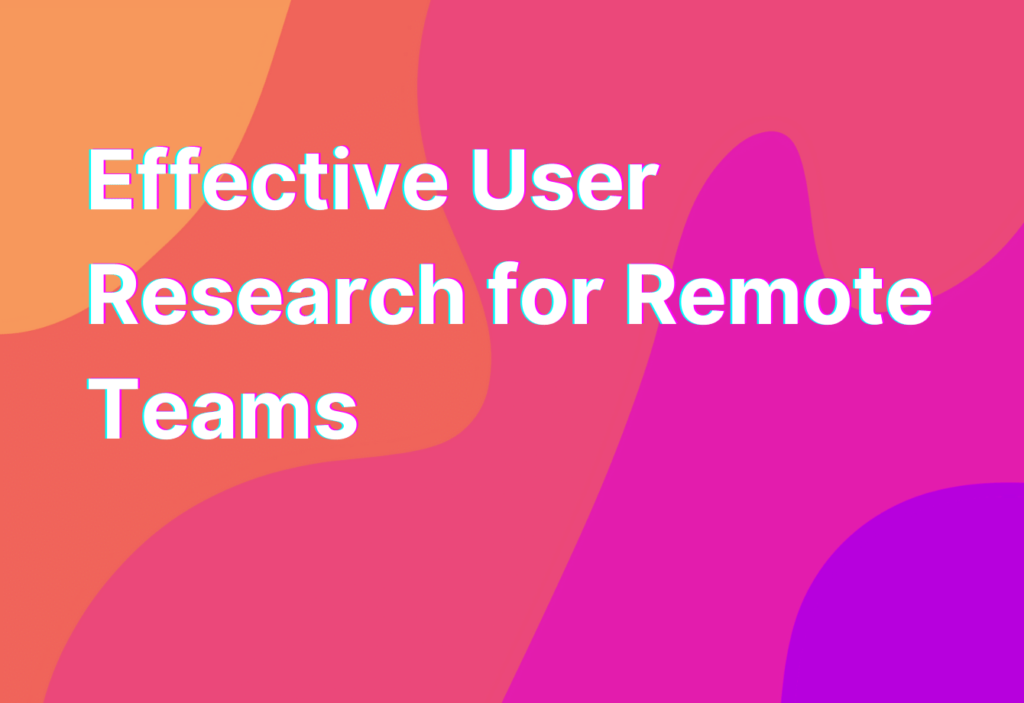Effective User Research for Remote Teams
As remote work continues to gain popularity, it’s important for remote teams to find effective ways to conduct user research. User research is a crucial step in the product development process, as it helps teams understand their users’ needs, preferences, and pain points. In this article, we’ll explore some strategies and best practices for conducting user research in a remote setting.
The Importance of User Research
User research is the foundation of successful product development. It allows teams to gain insights into their target audience, validate assumptions, and make informed decisions. Without user research, teams risk building products that don’t meet user needs or solve their problems.
When working remotely, user research becomes even more important. Remote teams don’t have the luxury of face-to-face interactions with users, making it essential to find alternative methods to gather user insights. Let’s dive into some effective strategies for conducting user research in a remote setting.
1. Conduct Remote Interviews
One of the most effective ways to gather user insights is through remote interviews. Remote interviews allow teams to have one-on-one conversations with users, just as they would in person. Platforms like Zoom, Skype, or Google Meet make it easy to conduct remote interviews.
During remote interviews, it’s important to ask open-ended questions to encourage participants to share their thoughts and experiences. Additionally, using screen-sharing capabilities can help participants demonstrate how they interact with a product or website.
Remember, user research is not about confirming your assumptions, but rather about understanding your users’ perspectives. Be open to feedback and listen actively to what participants have to say.
2. Utilize Remote Usability Testing
Usability testing is a valuable method for evaluating the usability of a product or website. In a remote setting, teams can conduct remote usability testing to gather feedback from users.
Platforms like UserTesting or Maze allow teams to create tasks for participants to complete while recording their screen and gathering feedback. This method provides valuable insights into how users interact with a product and identifies areas for improvement.
When conducting remote usability testing, it’s important to clearly define the tasks and scenarios for participants. This ensures consistency across participants and allows teams to compare results effectively.
3. Leverage Online Surveys
Online surveys are a cost-effective and efficient way to gather quantitative data from a large number of users. Platforms like Google Forms or SurveyMonkey make it easy to create and distribute online surveys.
When designing online surveys, it’s important to keep them concise and focused. Avoid asking leading questions and provide clear instructions for participants. Additionally, consider offering incentives to encourage participation.
Online surveys can provide valuable insights into user demographics, preferences, and satisfaction levels. However, it’s important to remember that they only provide a snapshot of user opinions and should be used in conjunction with other research methods.
4. Analyze User Behavior with Analytics Tools
Analytics tools like Google Analytics or Hotjar can provide valuable insights into user behavior. By analyzing data such as page views, click-through rates, or time spent on page, teams can gain a better understanding of how users interact with their product or website.
When using analytics tools, it’s important to set up relevant goals and events to track user actions. This allows teams to measure the success of specific features or user flows.
Additionally, heatmaps and session recordings can provide visual representations of user behavior, helping teams identify areas of improvement or potential usability issues.
Wrapping Up
Effective user research is essential for remote teams to build successful products. By conducting remote interviews, utilizing remote usability testing, leveraging online surveys, and analyzing user behavior with analytics tools, teams can gather valuable insights into their users’ needs and preferences.
Remember, user research is an ongoing process. It’s important to continuously gather feedback and iterate on your product based on user insights. By prioritizing user research, remote teams can create products that truly meet their users’ needs.
For more tips on remote team leadership and communication strategies, check out our Virtual Team Leadership article.


